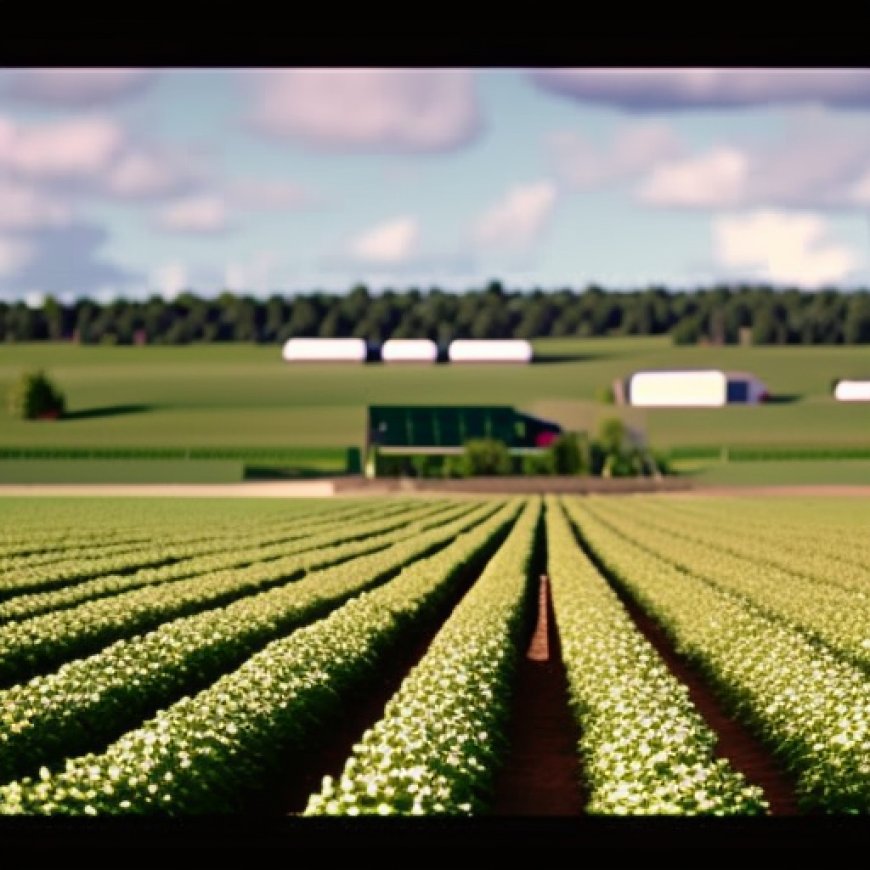Agriculture Conservation Easement Program is protecting land from being developed
Agriculture Conservation Easement Program is protecting land from being developed Cache Valley Daily


Sustainable Development Goals (SDGs) and Conservation Efforts in Northern Utah

Introduction
The conservation of agricultural land in Northern Utah has been a long and challenging process. However, through the efforts of various organizations and agencies, over 2,100 acres have been permanently protected through the Agriculture Conservation Easement Program. This article highlights the importance of these conservation efforts and their alignment with the Sustainable Development Goals (SDGs).
Conservation Easements and Stakeholders
- Summit Land Conservancy
- Ogden Valley Trust
- Summit County
- Bear River Land Conservancy
- Utah Department of Agriculture and Food
These organizations have collaborated to preserve wildlife habitat, protect cultural history, and limit nonagricultural uses that could harm the conservation value of the land.
Funding Challenges and Solutions
Prior to recent developments, funding was a major obstacle for landowners seeking to participate in the agricultural easement program. The Natural Resources Conservation Service (NRCS) agricultural easement program provided up to 50 percent of the funding, requiring landowners to contribute the remaining 50 percent. However, many landowners struggled to meet this requirement.
Fortunately, the state of Utah now offers the LeRay McAllister Critical Lands Conservation Fund to assist those with insufficient funds. Additionally, the legislature has allocated more money to support contracts through the program.
Financial Assistance and Conservation Programs
The successful protection of these sensitive lands has been made possible through financial assistance from the NRCS. The Agricultural Conservation Easement Program – Agricultural Land Easement (ACEP-ALE) contributed $3,614,500, while the Regional Conservation Partnership Program (RCPP) provided $2,045,000.
Travis Mote, NRCS Acting State Conservationist for Utah, acknowledges the dedication of local and state municipalities, land trusts, and conservation partners in achieving this milestone. He emphasizes the importance of protecting Utah’s natural resources for future generations.
Conservation Impact and Ecological Value
One notable conservation easement covers a 1,054-acre working cattle ranch in Cache County. This area holds immense ecological, agricultural, and cultural value. It serves as a crucial habitat for mule deer and elk, providing essential vegetation for wildlife throughout the year. The land also supports upland and migratory birds, including sharp-tailed grouse.
In addition to its ecological significance, this land plays a vital role in water conservation. It contributes to an important aquifer that feeds into the Bear River and Great Salt Lake. Furthermore, it fosters a friendly ecological habitat for various meadow species.
Cultural Significance
The Cache Valley, particularly the area known as “Sagwich Basin,” holds historic significance for the Northwestern Band of the Shoshone Nation. It was not merely land but a home, burial ground, refuge from war, fall encampment, and lookout point where four different canyons converged. Darren Parry, former Chairman of the Northwestern Band of the Shoshone Nation, emphasized the cultural importance of this area.
SDGs and Future Funding
The conservation efforts in Northern Utah align with the SDGs, particularly Goal 15: Life on Land. These initiatives contribute to the preservation of biodiversity, protection of ecosystems, and sustainable land use.
Additional funding for climate-smart agriculture and forestry mitigation activities is available through NRCS conservation programs. The Inflation Reduction Act has allocated $19.5 billion, including $1.4 billion for ACEP. This funding aims to support climate-smart conservation easements that conserve wetlands, grasslands, and prime farmlands.
Applications for fiscal year 2025 are currently being accepted until November 1, 2024.
SDGs, Targets, and Indicators
1. SDGs Addressed or Connected to the Issues Highlighted in the Article
- SDG 15: Life on Land – This goal is connected to the issues highlighted in the article as it focuses on protecting, restoring, and promoting sustainable use of terrestrial ecosystems, including forests, wetlands, and biodiversity.
- SDG 6: Clean Water and Sanitation – This goal is connected to the issues highlighted in the article as it focuses on ensuring the availability and sustainable management of water and sanitation for all.
- SDG 11: Sustainable Cities and Communities – This goal is connected to the issues highlighted in the article as it focuses on making cities and human settlements inclusive, safe, resilient, and sustainable.
2. Specific Targets Under Those SDGs Based on the Article’s Content
- Target 15.1: By 2020, ensure the conservation, restoration, and sustainable use of terrestrial and inland freshwater ecosystems and their services.
- Target 6.6: By 2020, protect and restore water-related ecosystems, including mountains, forests, wetlands, rivers, aquifers, and lakes.
- Target 11.4: Strengthen efforts to protect and safeguard the world’s cultural and natural heritage.
3. Indicators Mentioned or Implied in the Article to Measure Progress Towards the Identified Targets
- Indicator 15.1.1: Forest area as a proportion of total land area.
- Indicator 6.6.1: Change in the extent of water-related ecosystems over time.
- Indicator 11.4.1: Total expenditure (public and private) per capita spent on the preservation, protection, and conservation of all cultural and natural heritage.
Table: SDGs, Targets, and Indicators
| SDGs | Targets | Indicators |
|---|---|---|
| SDG 15: Life on Land | Target 15.1: By 2020, ensure the conservation, restoration, and sustainable use of terrestrial and inland freshwater ecosystems and their services. | Indicator 15.1.1: Forest area as a proportion of total land area. |
| SDG 6: Clean Water and Sanitation | Target 6.6: By 2020, protect and restore water-related ecosystems, including mountains, forests, wetlands, rivers, aquifers, and lakes. | Indicator 6.6.1: Change in the extent of water-related ecosystems over time. |
| SDG 11: Sustainable Cities and Communities | Target 11.4: Strengthen efforts to protect and safeguard the world’s cultural and natural heritage. | Indicator 11.4.1: Total expenditure (public and private) per capita spent on the preservation, protection, and conservation of all cultural and natural heritage. |
Copyright: Dive into this article, curated with care by SDG Investors Inc. Our advanced AI technology searches through vast amounts of data to spotlight how we are all moving forward with the Sustainable Development Goals. While we own the rights to this content, we invite you to share it to help spread knowledge and spark action on the SDGs.
Fuente: cachevalleydaily.com

Join us, as fellow seekers of change, on a transformative journey at https://sdgtalks.ai/welcome, where you can become a member and actively contribute to shaping a brighter future.







